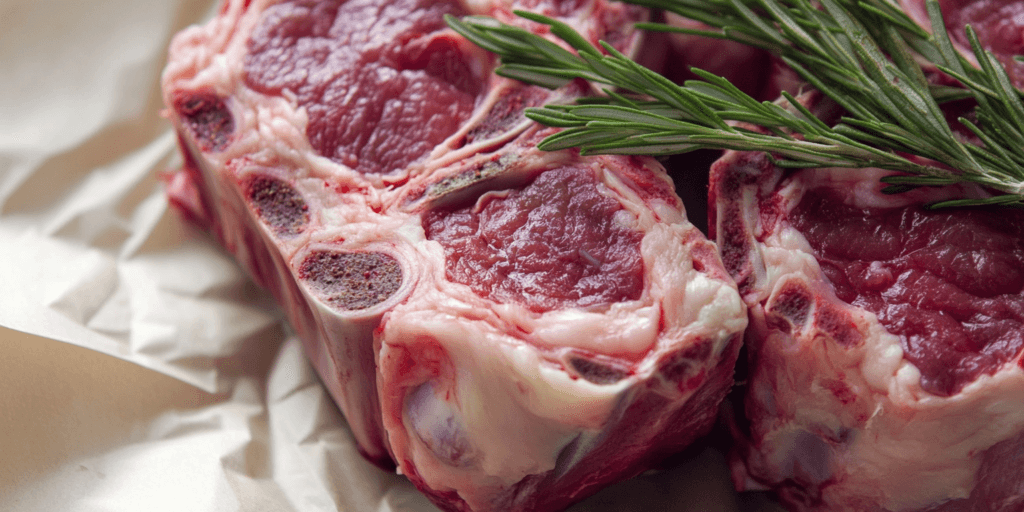
Table of contents
Lamb Head Cuisine
Lamb head cuisine showcases nose-to-tail cooking, where cooks utilize every part of the animal. This tradition dates back thousands of years and thrives in cultures across the globe, from the Middle East and North Africa to Eastern Europe and parts of Asia. Many people prize lamb head for its rich flavors and unique textures, especially the succulent cheek meat, creamy brains, and tender tongue.
Preparing lamb head may seem unconventional or challenging, but the results make the effort worthwhile. This dish embodies respect for the animal and the skill of using every cut effectively. Whether you boil, roast, or slow-cook it, lamb head delivers a deep, savory flavor that feels both comforting and satisfying.
In many cultures, families serve lamb head during special occasions or hearty meals, pairing it with bread, rice, and flavorful sides. Beyond its taste, this dish reflects heritage, resourcefulness, and culinary creativity, offering a unique and delightful experience for adventurous eaters.
Why Lamb Head is a Culinary Treasure
Lamb head is a unique dish that offers rich flavors, tender textures, and cultural significance. When cooked properly, the cheeks, tongue, and brain provide a delightful culinary experience. If you’re curious about the nutritional benefits, check out Lamb Head Cuisine: Benefits and Recipes for a detailed breakdown of nutrients.
Unique and Rich Flavors
Every part of the lamb head has a different texture and taste. The cheeks provide soft, tender meat, often thought to be the most flavorful. The tongue adds a meaty richness, while the brains offer a smooth, creamy texture. Together, these parts create a mix of flavors that makes each bite special.
Cultural Importance
In many parts of the world, people serve lamb head during celebrations and family meals. Countries like Morocco, Turkey, Iran, and Eastern Europe use this dish in their traditional feasts. It brings families and friends together, honoring their culture and food heritage.
Reducing Waste with Nose-to-Tail Cooking
Eating lamb head supports nose-to-tail cooking, which means using the whole animal. This reduces waste and shows respect for the ingredients. By cooking lamb head, you help support more sustainable eating habits.
An Adventurous Dish
For those who enjoy trying new foods, lamb head offers a chance to taste something different. Preparing this dish can be a fun challenge and a way to connect with traditional cooking methods from around the world.
Lamb head isn’t just a meal — it’s a journey into history, flavor, and sustainability. Those who try it often discover a new respect for the art of cooking and the traditions that come with it.
Selecting the Best Lamb Head
Choosing a high-quality lamb head is key to preparing a delicious and satisfying dish. Here are some important tips to help you pick the best one for your recipe.
1. Freshness is Key
Look for a lamb head that is fresh and recently butchered. Fresh lamb head should have a clean smell and show no signs of spoilage, like a sour odor or slimy texture. The color of the meat should be bright red, and the fat should be white or cream-colored.
2. Clear Eyes
Check the eyes of the lamb head. Fresh lamb head will have clear, bright eyes. Avoid heads with cloudy or sunken eyes, as these are signs that the meat is no longer fresh.
3. Skin and Meat Condition
If the head still has skin, it should look clean and free of hair or dirt. If the skin has been removed, the meat should appear moist but not overly wet. The cheeks should feel firm, and the tongue should be plump and intact.
4. Butcher Quality
Buy from a trusted butcher or a reputable meat market. A good butcher will ensure the lamb head is properly cleaned and prepared for cooking. They can also split the head for you, making it easier to handle and cook.
5. Ask Questions
Don’t hesitate to ask your butcher about the lamb’s origin and how fresh the head is. Knowing where the meat comes from can help you feel confident in its quality.
By following these tips, you can ensure you get the best lamb head for your dish. Starting with fresh, high-quality ingredients will make your cooking experience enjoyable and your meal truly delicious.
Preparing the Lamb Head for Cooking
Proper preparation of a lamb head is essential to achieve a delicious and satisfying dish. Follow these steps to clean and prep the lamb head before cooking.
1. Clean the Lamb Head Thoroughly
- Rinse the Head: Start by rinsing the lamb head under cold running water to remove any dirt or debris.
- Remove Hair: If there are any remaining hairs, briefly pass the lamb head over an open flame or use a kitchen torch to scorch them off. Scrape away the burnt hairs with a knife or a clean cloth.
- Rinse Again: After removing the hair, rinse the lamb head once more to ensure it is completely clean.
2. Remove Unwanted Parts
- Eyes and Brain: Depending on the recipe or your preference, you may want to remove the eyes or brain. You can ask your butcher to do this or use a sharp knife to remove these parts carefully.
- Teeth and Tongue: The tongue is often left in for cooking, but ensure the teeth and gums are clean. You can also remove the tongue if desired and cook it separately.
3. Soak the Lamb Head (Optional)
- To reduce any strong flavors, soak the lamb head in a bowl of cold water with a few tablespoons of salt or vinegar. Let it soak for 1-2 hours, then rinse it thoroughly.
4. Seasoning the Lamb Head
- Marinate: Create a marinade with olive oil, garlic, salt, black pepper, cumin, and other herbs or spices of your choice. Rub the marinade all over the lamb head, making sure to coat every part evenly.
- Rest Time: Let the lamb head marinate for at least 30 minutes to an hour to allow the flavors to penetrate.
5. Optional Cutting for Ease of Cooking
- Split the Head: If the lamb head is whole, consider asking your butcher to split it in half. This makes it easier to cook and ensures even cooking throughout.
By carefully cleaning, soaking, and seasoning the lamb head, you set the stage for a flavorful and tender dish. These preparation steps help ensure that your lamb head recipe turns out delicious and enjoyable.
Step-by-Step Cooking Process
Cooking a lamb head may seem complex, but following a clear process ensures a delicious and tender result. Here’s a step-by-step guide to help you prepare this dish with confidence.
1. Boil the Lamb Head
- Place in a Pot: Put the cleaned and prepared lamb head into a large pot. If the head is split, place both halves in the pot.
- Add Aromatics: Add aromatics such as garlic cloves, bay leaves, fresh herbs (like rosemary or thyme), onion, and a pinch of salt and pepper.
- Cover with Water: Pour enough cold water into the pot to fully submerge the lamb head.
- Bring to a Boil: Turn the heat to high and bring the water to a boil. Once it boils, skim off any foam or impurities that rise to the surface.
2. Simmer the Lamb Head
- Lower the Heat: Reduce the heat to a gentle simmer. Cover the pot with a lid.
- Cook Slowly: Allow the lamb head to simmer for 2 to 2.5 hours. The meat should become tender and easy to pull away from the bone.
- Check for Doneness: Use a fork to check the cheeks and tongue. If the fork slides in easily, the lamb head is ready.
3. Optional Roasting for Extra Flavor
- Preheat the Oven: If you prefer a crispy finish, preheat the oven to 400°F (200°C).
- Prepare for Roasting: Remove the lamb head from the pot and place it on a baking sheet. Drizzle with olive oil and a bit of lemon juice for extra flavor.
- Roast: Place in the oven and roast for 15-20 minutes until the surface is golden and crispy.
4. Serving the Lamb Head
- Cool Slightly: Allow the lamb head to cool for a few minutes so it’s easier to handle.
- Carve and Serve:
- Cheeks: The cheek meat is tender and flavorful.
- Tongue: Peel the outer layer of the tongue and slice the meat.
- Brains: Carefully scoop out the brains, which have a creamy texture.
- Garnish: Sprinkle with fresh herbs like parsley or cilantro for a burst of freshness.
- Pairing: Serve with warm bread, rice, potatoes, or a side salad for balance.
By following this step-by-step process, you can prepare a lamb head that is tender, flavorful, and satisfying. Enjoy this traditional dish and the rich flavors it brings to your table!
FAQs About Cooking Lamb Head
1. Is cooking a lamb head difficult?
No, cooking a lamb head is simpler than it may seem. While it may take time, the process mainly involves boiling or roasting, and the steps are straightforward. Following a detailed guide makes it much easier.
2. Where can I buy a lamb head?
You can purchase a lamb head from a local butcher, specialty meat markets, or international grocery stores. It’s a good idea to call ahead and ask if they have it in stock or if they can order it for you.
3. How do I clean a lamb head properly?
To clean a lamb head, rinse it under cold water, remove any remaining hair by briefly scorching it with a flame or kitchen torch, and rinse it again. Some prefer to soak it in saltwater or vinegar water to reduce strong flavors.
4. How do I know when the lamb head is cooked?
The lamb head is ready when the meat is tender and easily pulls away from the bone. This usually takes about 2 to 2.5 hours of simmering. The tongue should also be soft, and the cheeks should be easy to pierce with a fork.
5. What does lamb head taste like?
Lamb head offers a mix of textures and flavors. The cheeks are tender and rich, the tongue has a smooth, meaty taste, and the brains provide a creamy, delicate flavor. Each part has its own unique profile.
6. Can I roast the lamb head instead of boiling it?
Yes, you can roast the lamb head. Season it well, place it in a roasting pan, and cook it at 375°F to 400°F (190°C to 200°C) for about 1.5 to 2 hours, or until the meat is tender and the outside is crispy.
7. What dishes pair well with lamb head?
Lamb head pairs well with flatbread, rice, potatoes, pickles, or fresh salads. These sides help balance the rich flavors of the dish.
8. How should I serve the lamb head?
Serve the lamb head whole or in halves. Carve the cheeks, tongue, and brain, and garnish with fresh herbs like parsley or cilantro. Offer lemon wedges for added freshness.
9. Can I store leftover lamb head?
Yes, you can store leftovers in an airtight container in the refrigerator for up to 3 days. Reheat gently on the stove or in the oven to maintain tenderness.
10. Is lamb head healthy to eat?
Lamb head is rich in protein, vitamins, and minerals. However, the brains and certain parts may be high in cholesterol, so enjoy them in moderation as part of a balanced diet.
These FAQs cover common concerns and tips to help you confidently prepare and enjoy this traditional dish.
